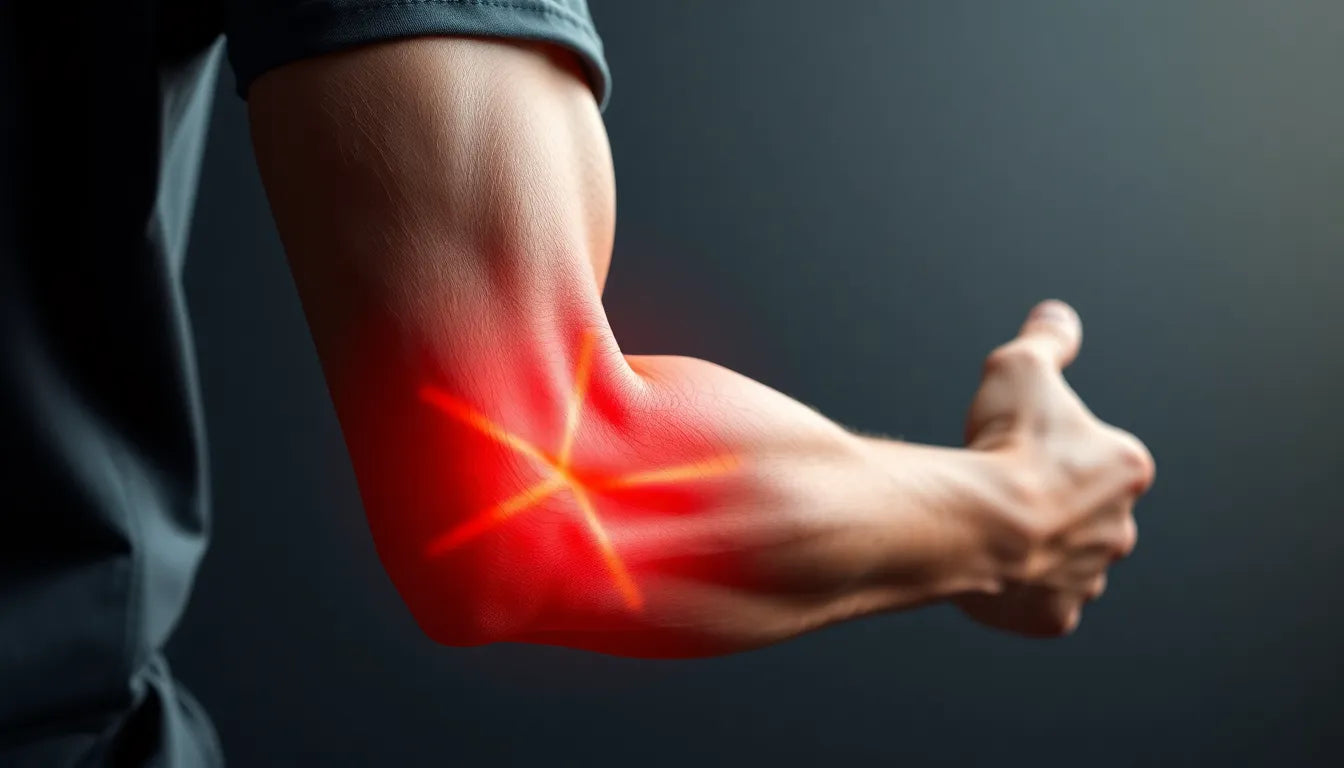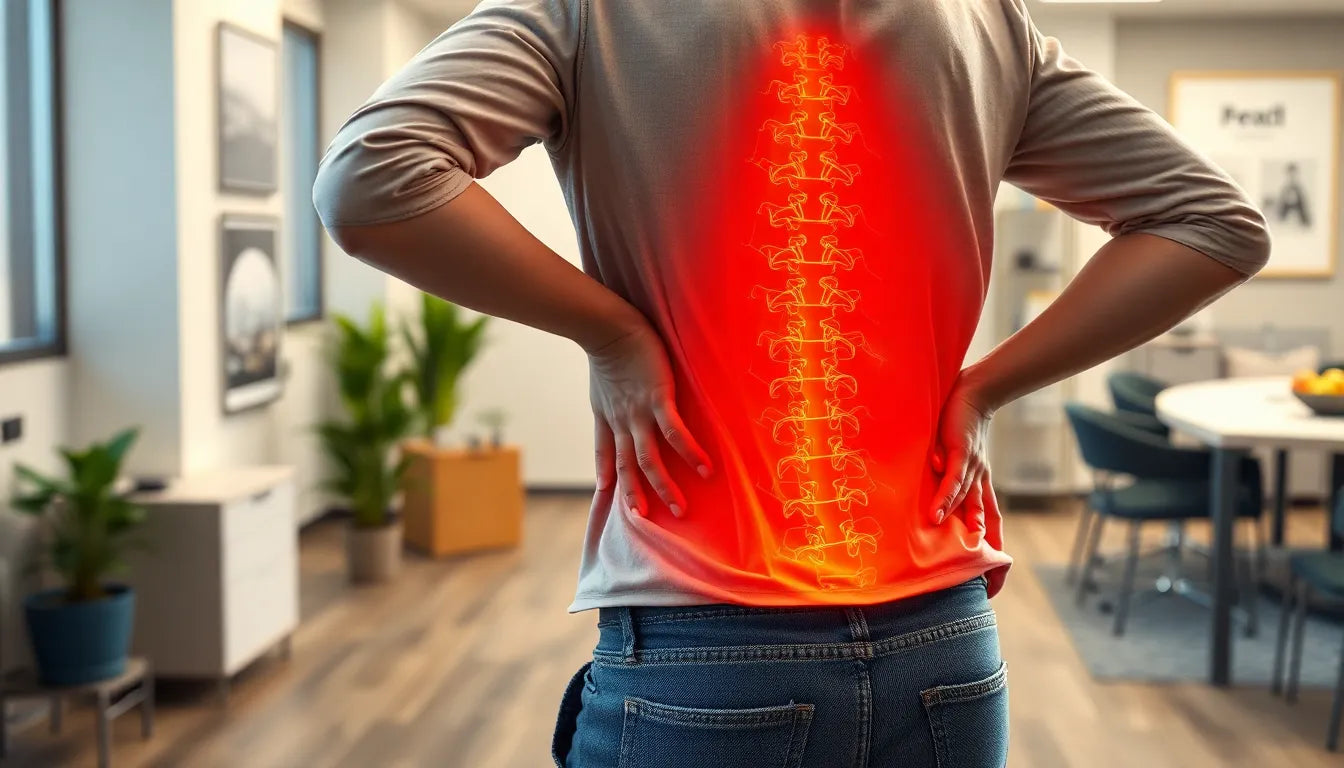Back pain is often dismissed as a minor inconvenience or the result of poor posture, but what if it was a warning sign of something more serious? While many associate back pain with musculoskeletal issues, it can sometimes be a symptom of heart conditions. Understanding this connection between back pain and heart symptoms is crucial for timely medical intervention.
Most people experience back pain at some point in their lives, typically attributing it to stress, heavy lifting, or an uncomfortable sleeping position. However, there are instances where back pain is not just a standalone issue but a red flag for underlying heart problems. Conditions such as angina pectoris or even a heart attack can manifest as back pain, complicating the diagnosis and delaying necessary treatment.
the hidden link between back pain and heart symptoms
It's essential to recognize that back pain can occasionally indicate a heart problem, especially when it is accompanied by other symptoms. Angina pectoris, for example, occurs when the heart muscle doesn't receive enough oxygen-rich blood, often causing pain that radiates to the back. Similarly, during a heart attack, pain that starts in the chest can spread to other areas, including the back, shoulders, arms, or neck.
This overlap of symptoms can be confusing, making it difficult to distinguish between ordinary back pain and heart-related issues. However, being aware of this potential connection is the first step toward ensuring that any serious conditions are not overlooked. Identifying heart-related back pain involves looking for additional symptoms that may accompany the discomfort.
why understanding this connection is crucial
Recognizing the signs of heart-related back pain can be lifesaving. Understanding how to differentiate between regular back pain and symptoms that might indicate a heart problem is crucial. This knowledge empowers individuals to seek medical attention promptly, potentially preventing severe complications or even saving a life.
In this blog post, we'll explore how to identify the symptoms that warrant immediate medical attention. By understanding the nuances of back pain and its potential links to heart health, readers can make informed decisions about when to consult a healthcare professional. This awareness not only aids in personal health management but also in supporting loved ones who might be experiencing similar symptoms.
Stay with us as we delve deeper into the specifics of heart-related back pain, the key symptoms to watch for, and how to effectively differentiate it from musculoskeletal pain. This knowledge is not just beneficial—it's essential for ensuring your well-being and that of those around you.
understanding the connection between back pain and heart symptoms
When considering the relationship between back pain and heart symptoms, it's important to understand how these seemingly unrelated issues can intersect. Heart-related back pain occurs when the heart is under duress, particularly during conditions like angina pectoris or a heart attack. These situations arise when the heart muscle receives insufficient oxygen, causing pain that can radiate to various parts of the body, including the back.
One of the key reasons for this pain radiation is the complex network of nerves that connect the heart and the spine. When the heart experiences distress, the pain signals can travel along these nerves, manifesting as discomfort in the back, shoulders, arms, or neck. This phenomenon can make it challenging to immediately associate back pain with heart issues, underscoring the importance of being vigilant about accompanying symptoms.
key symptoms to watch for
Identifying heart-related back pain involves recognizing specific symptoms that often accompany the discomfort. These symptoms can include:
- Pressing or burning pain: Unlike typical musculoskeletal pain, heart-related pain may feel like a heavy pressure or burning sensation.
- Shortness of breath: Difficulty breathing, especially when at rest or with minimal exertion, can be a significant indicator of heart stress.
- Cold sweats: Sudden sweating without physical exertion is a common symptom associated with heart problems.
- Severe dizziness: Feeling lightheaded or dizzy can occur due to reduced blood flow during heart distress.
- Nausea or fatigue: Unexplained tiredness or nausea can accompany heart-related pain, signaling the need for immediate medical evaluation.
These symptoms, especially when experienced together with back pain, should prompt immediate medical attention. Early intervention is crucial in preventing potentially life-threatening heart events.
differentiating heart pain from regular back pain
Distinguishing between heart-related and musculoskeletal back pain can be challenging but is essential for appropriate care. Here's a comparison to help identify the nature of the pain:
| Heart-Related Pain | Musculoskeletal Pain |
|---|---|
| Often sudden and may be accompanied by chest pain, shortness of breath, or cold sweats. | Typically related to movement or posture and may improve with rest or specific exercises. |
Heart-related pain is more likely to present suddenly, often without an obvious physical trigger, and is accompanied by other systemic symptoms. In contrast, musculoskeletal pain is usually linked to physical activities or positions and tends to improve with rest or targeted exercises.
Understanding these distinctions is vital for determining the appropriate course of action. If heart-related symptoms are suspected, seeking emergency medical care is imperative.
In the next section, we'll explore risk factors that can increase the likelihood of heart-related back pain and discuss precautionary measures that can be taken to reduce these risks. Additionally, we'll cover treatment and management options for both heart-related and musculoskeletal back pain, providing a comprehensive guide to navigating these health concerns.

Men's Posture Shirt™ - Black
Patented shirt supports posture, relieves pain and tension in neck, shoulders & back.

Lumbar support belt
Adjustable belt stabilises and relieves lower back pain and tension anytime.
risk factors and precautionary measures
Understanding the risk factors associated with heart-related back pain is essential for prevention and early intervention. Certain factors can increase the likelihood of experiencing heart-related symptoms, including age, a sedentary lifestyle, smoking, high cholesterol, and pre-existing health conditions like hypertension or diabetes. Being aware of these risks allows individuals to take proactive steps toward heart health.
Preventive measures are crucial in reducing the risk of both heart-related and musculoskeletal issues. Adopting a heart-healthy lifestyle that includes regular physical activity, a balanced diet, and avoiding tobacco use can significantly lower the risk of heart disease. Additionally, maintaining a healthy weight and managing stress are important components of heart health.
For those concerned about musculoskeletal back pain, ergonomic practices can be beneficial. Proper posture, supportive seating, and regular stretching exercises can help alleviate discomfort and prevent future pain. Incorporating these practices into daily routines can enhance overall well-being and reduce the likelihood of pain-related issues.
treatment and management options
When addressing back pain, it's crucial to first rule out heart-related causes. If you suspect your back pain may be related to heart issues, seek immediate medical attention. A healthcare professional can perform necessary evaluations to determine the cause of the pain and recommend appropriate treatment.
Once heart-related issues are excluded, managing musculoskeletal back pain can involve various non-acute strategies. Ergonomic aids, such as lumbar supports and adjustable chairs, can improve posture and reduce strain on the back. Physiotherapy and targeted exercises can strengthen back muscles, increasing flexibility and reducing pain.
In addition to professional guidance, self-care practices play a vital role in managing back pain. Incorporating gentle stretching routines, staying active, and ensuring proper ergonomics in daily activities can help maintain back health and prevent future discomfort.
frequently asked questions
how can I tell if my back pain is related to my heart?
Look for accompanying symptoms such as chest pain, shortness of breath, and cold sweats. If you experience these symptoms, seek medical advice immediately to rule out heart-related issues.
what should I do if I suspect my back pain is heart-related?
If you suspect your back pain might be heart-related, contact emergency services immediately for an evaluation. It's crucial to address potential heart issues promptly to prevent severe complications.
can lifestyle changes help prevent heart-related back pain?
Yes, maintaining a healthy lifestyle can reduce the risk of heart-related issues. Regular exercise, a balanced diet, and avoiding tobacco use are key components in promoting heart health and preventing related symptoms.
what are some ergonomic practices to alleviate regular back pain?
To manage musculoskeletal back pain, focus on maintaining proper posture, using supportive seating, and incorporating regular stretching exercises into your routine. These practices can help alleviate discomfort and prevent future pain.


















